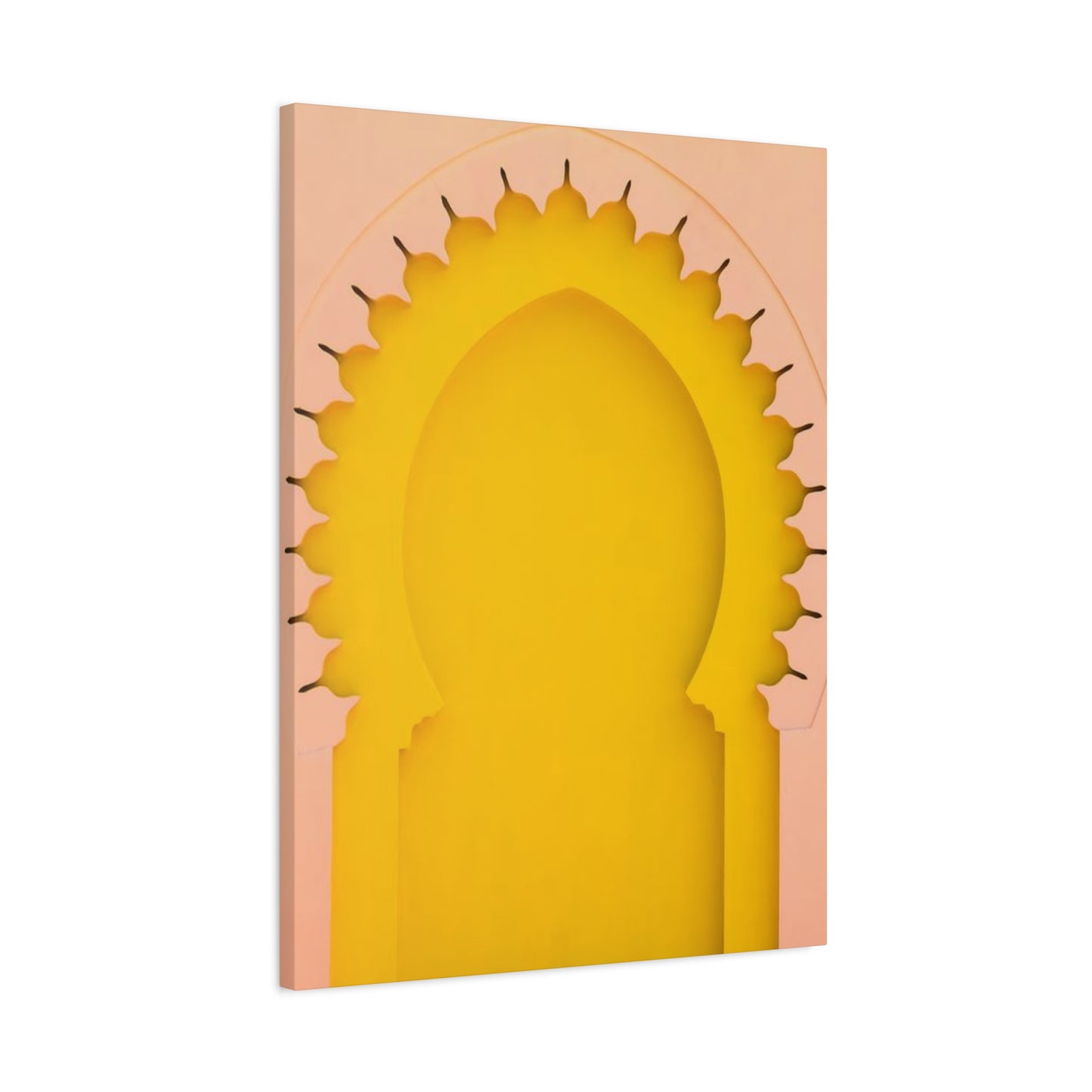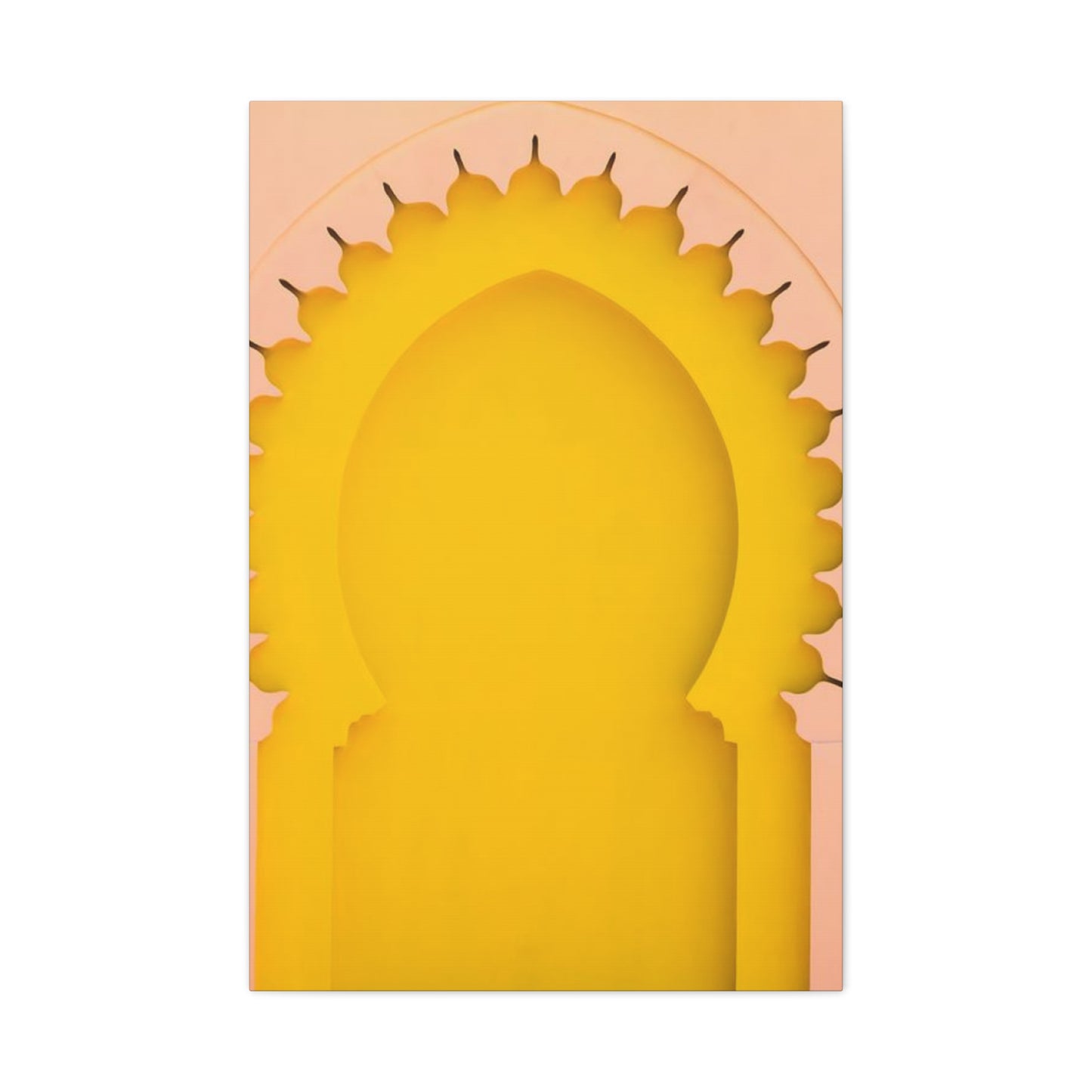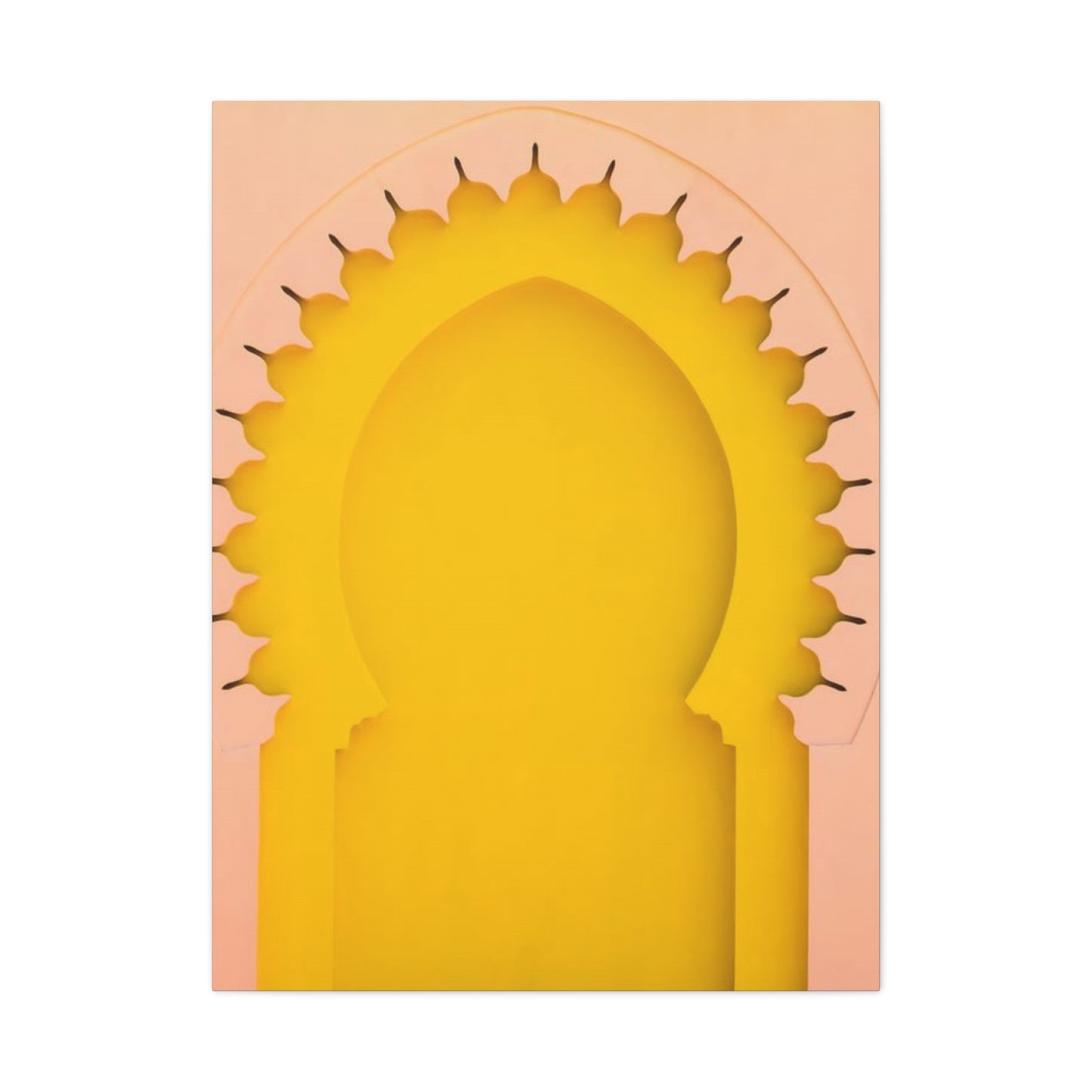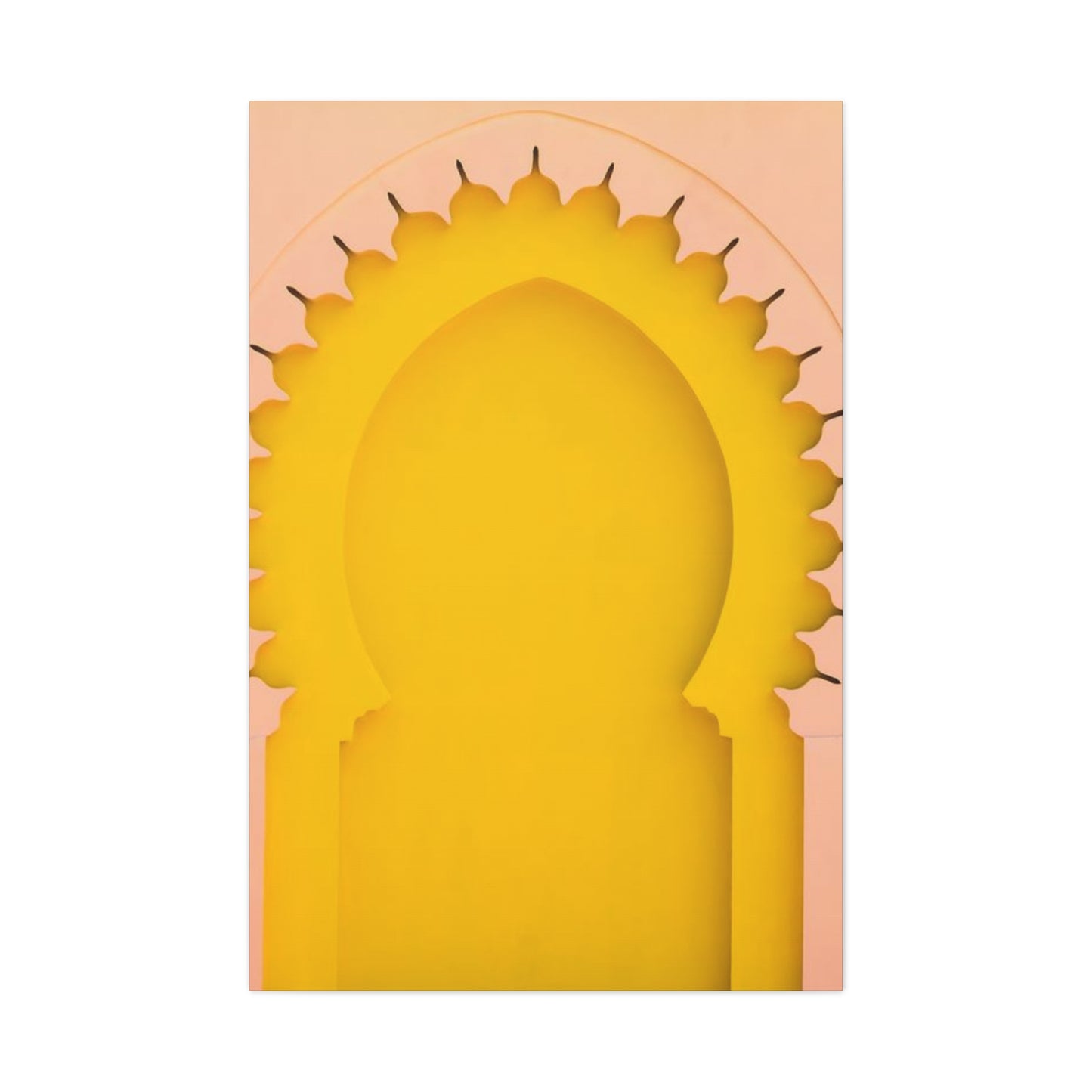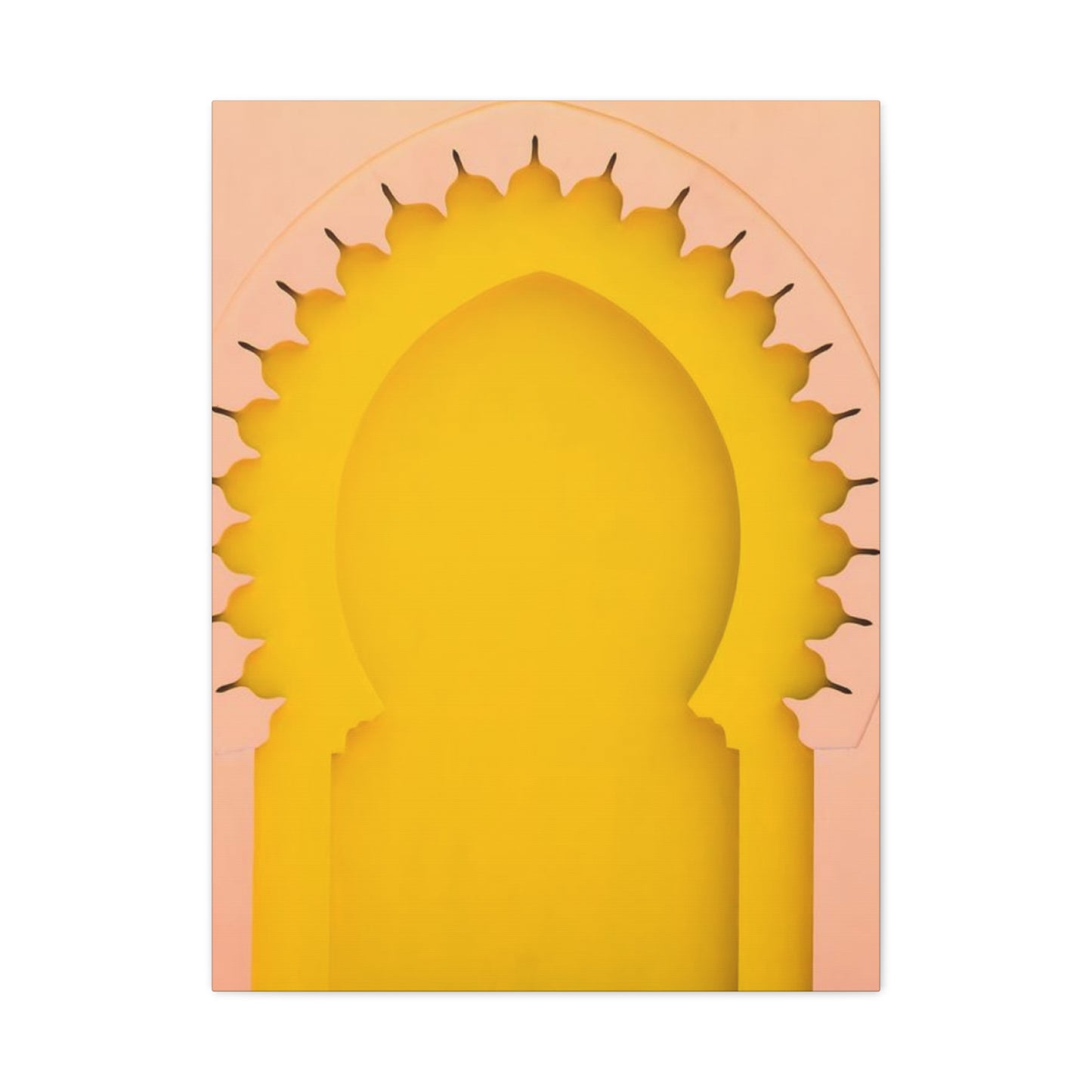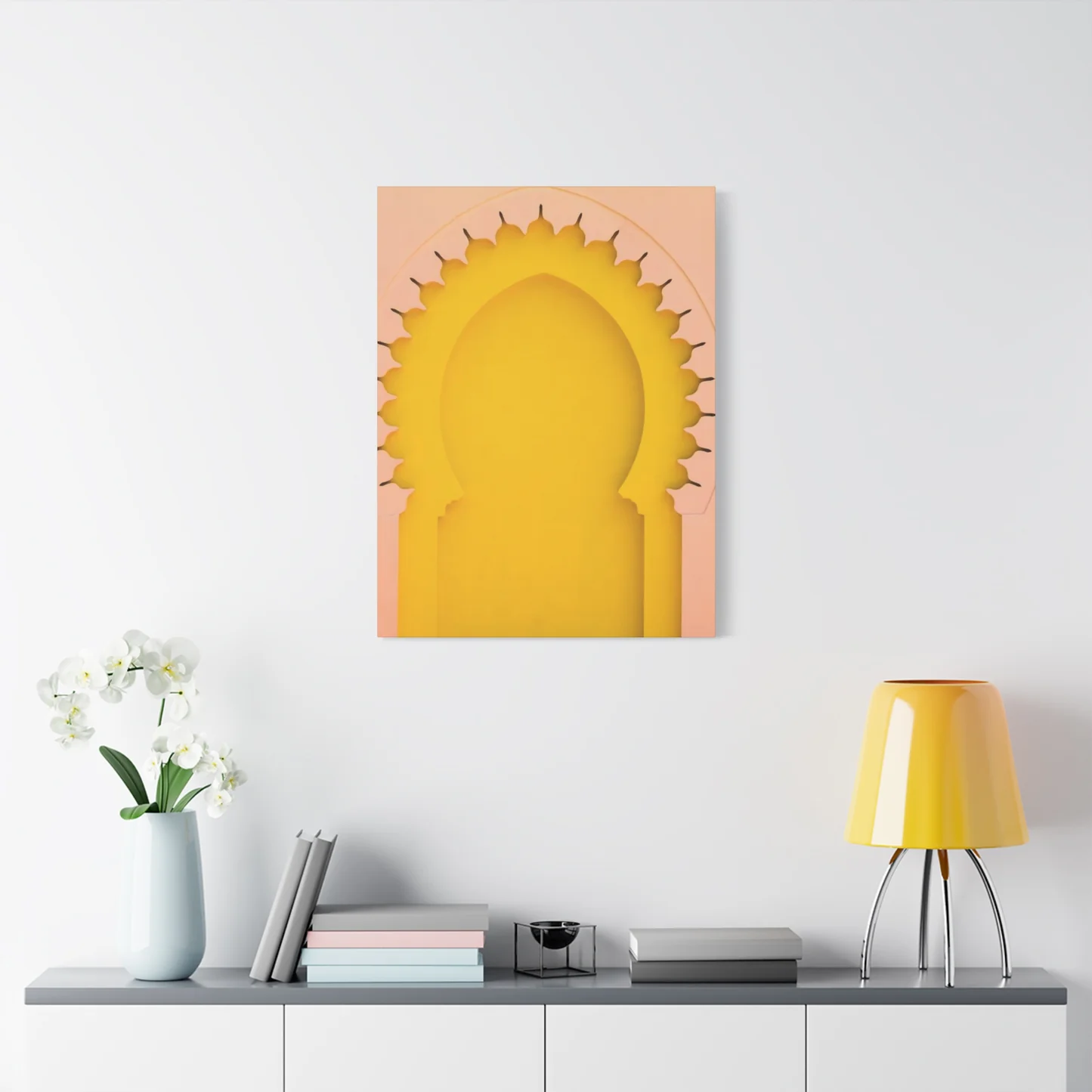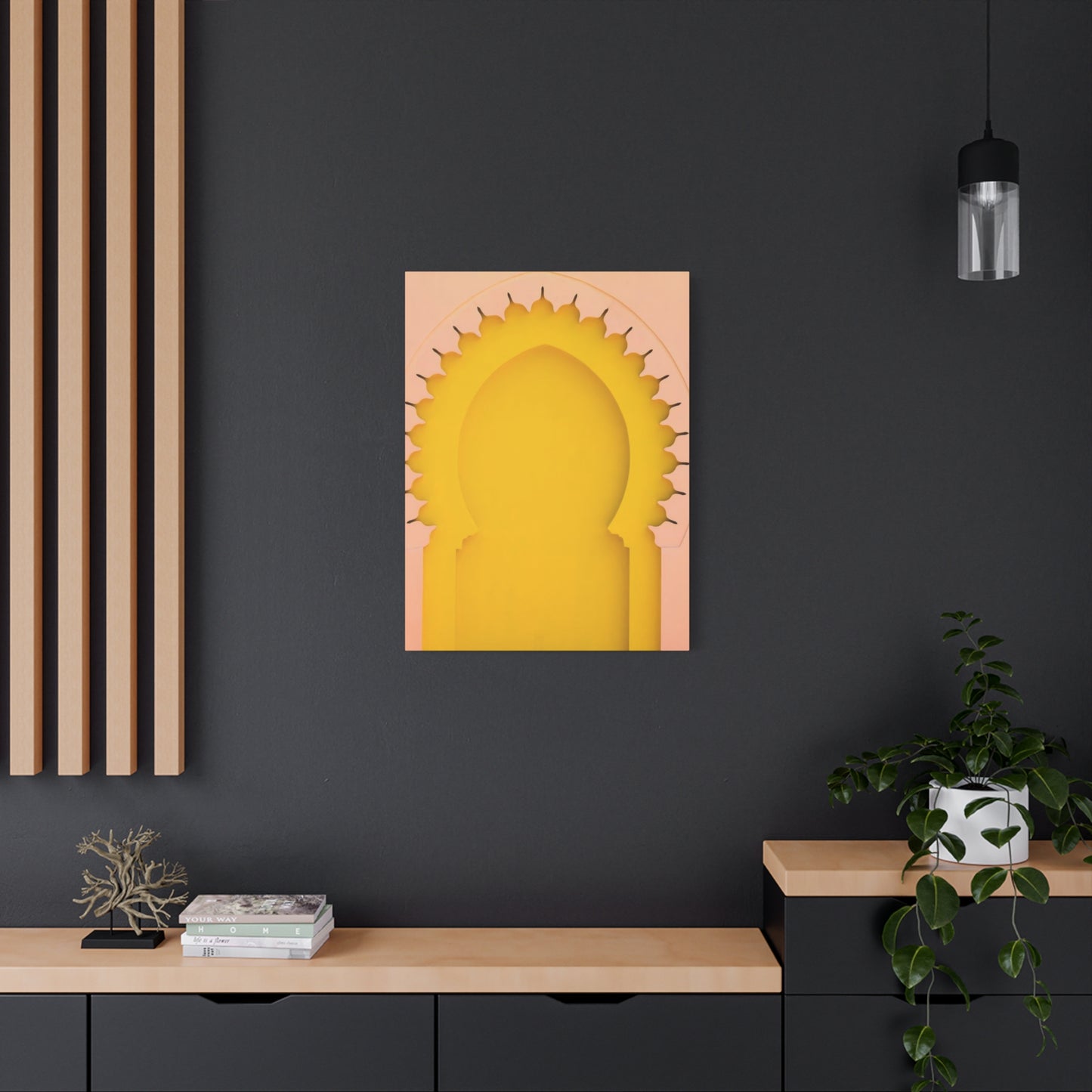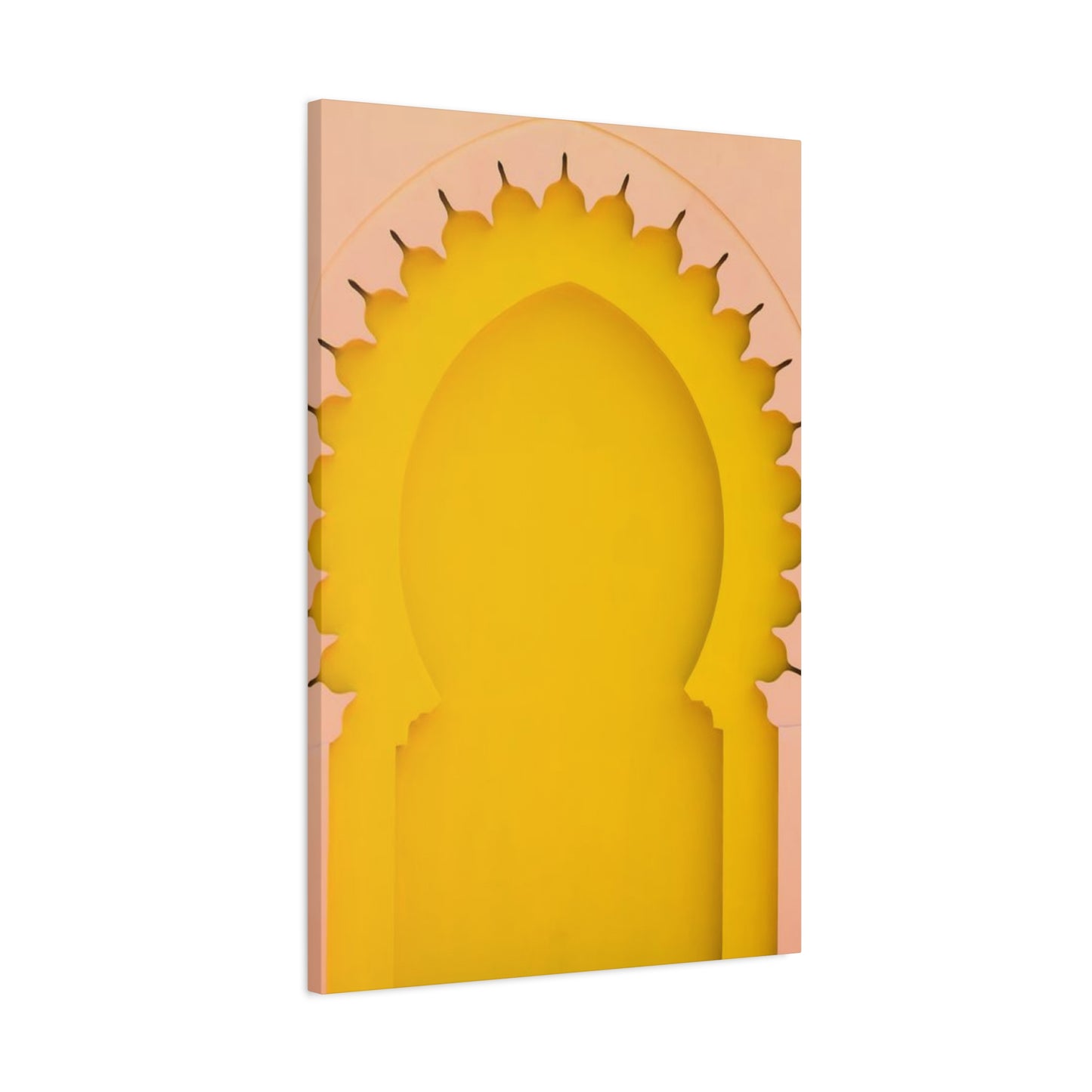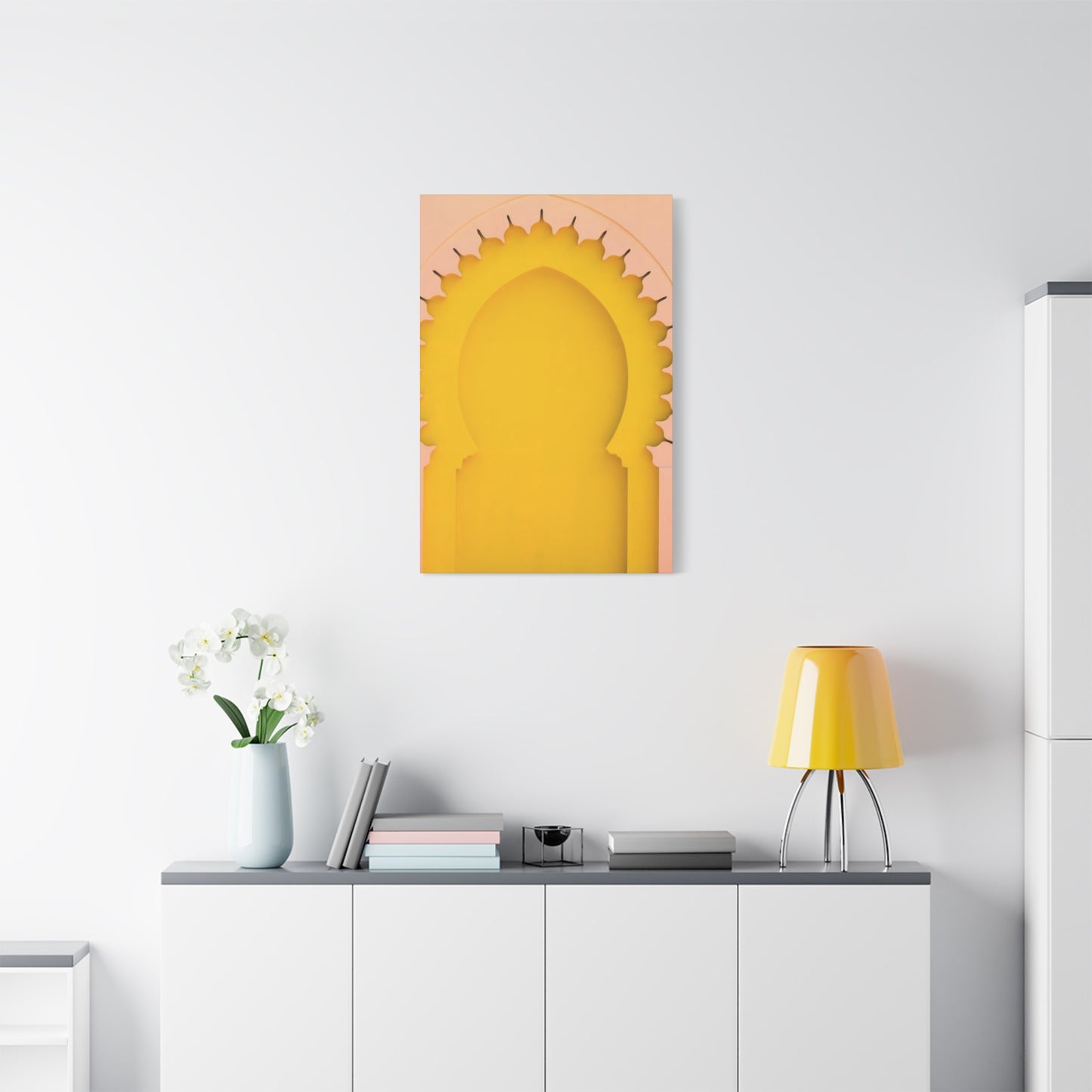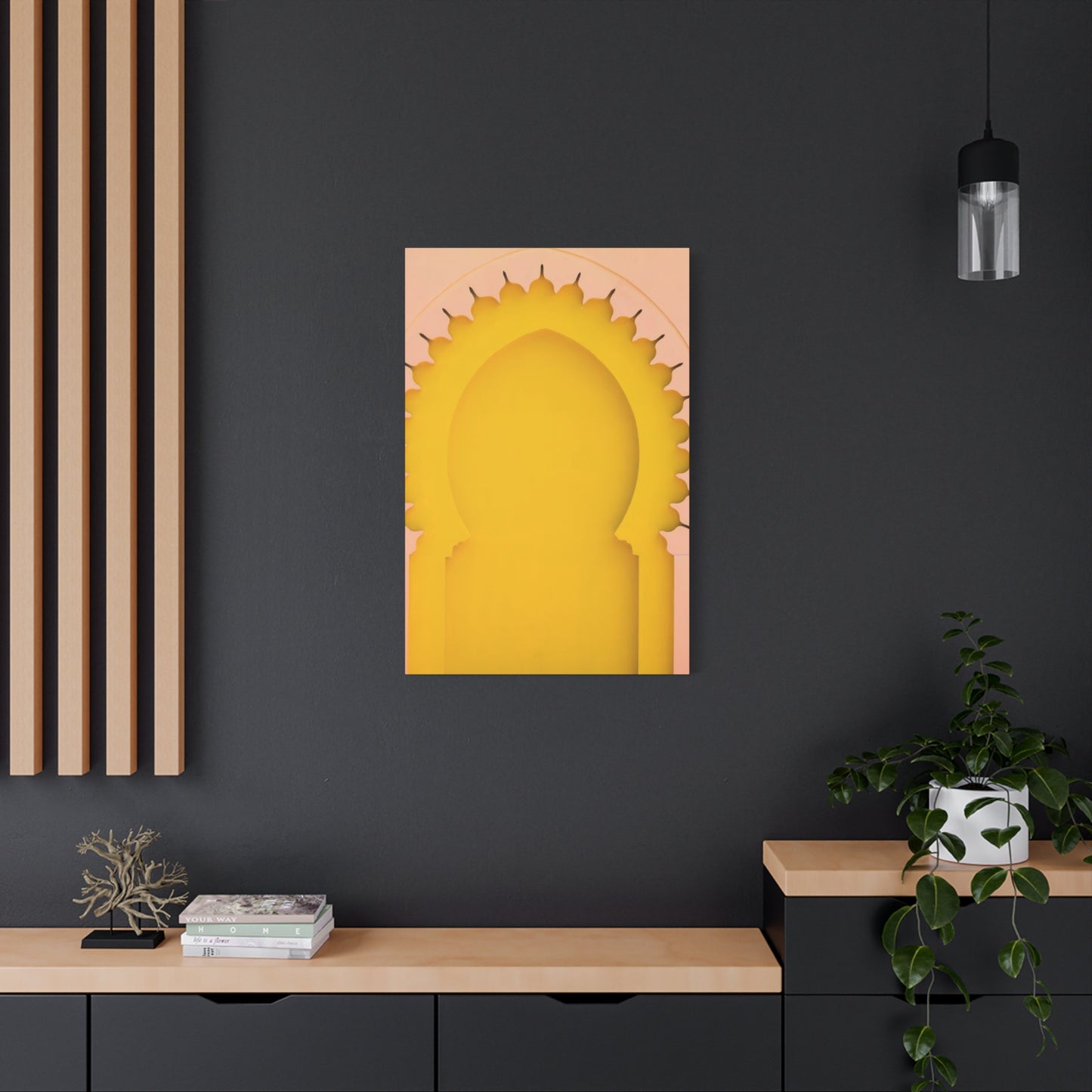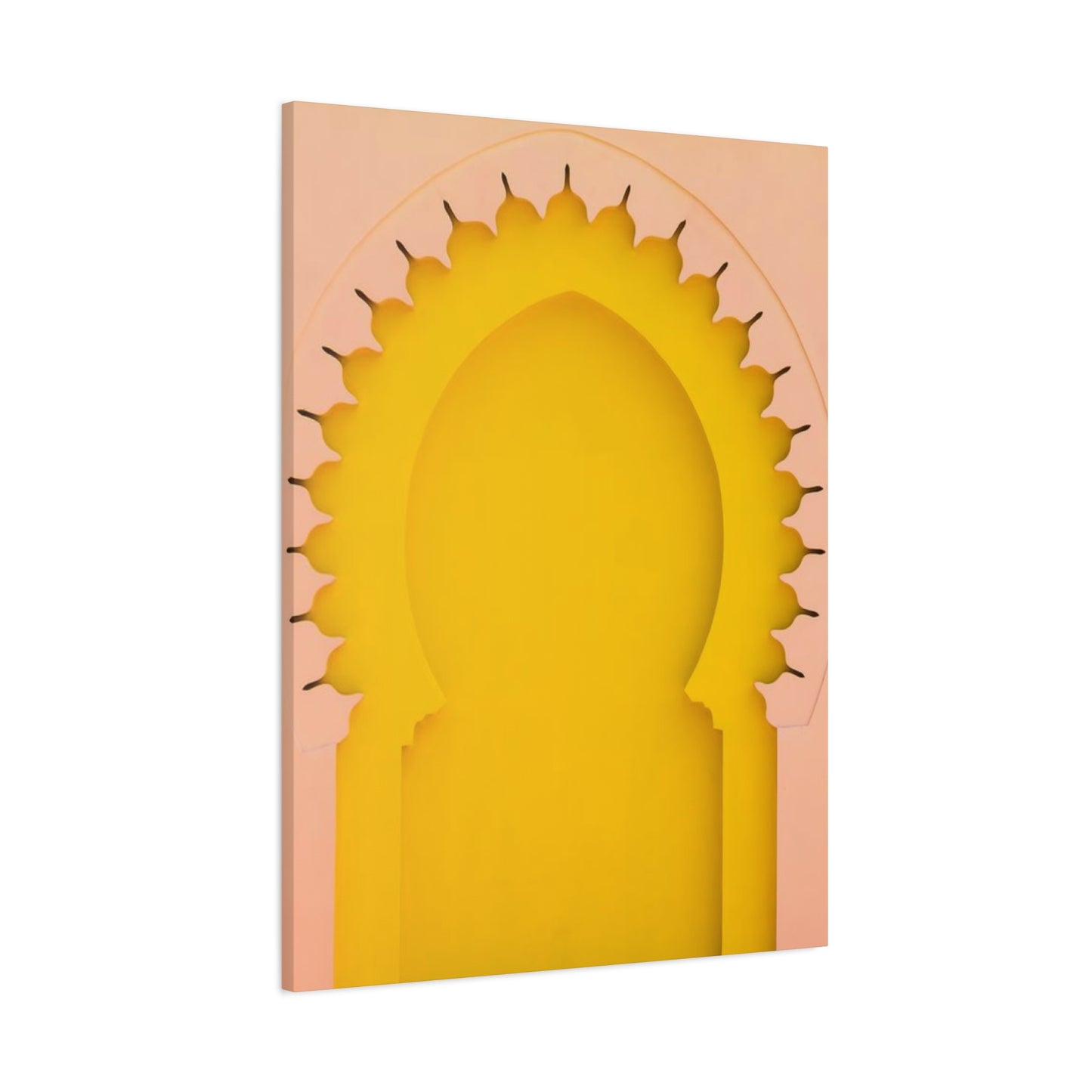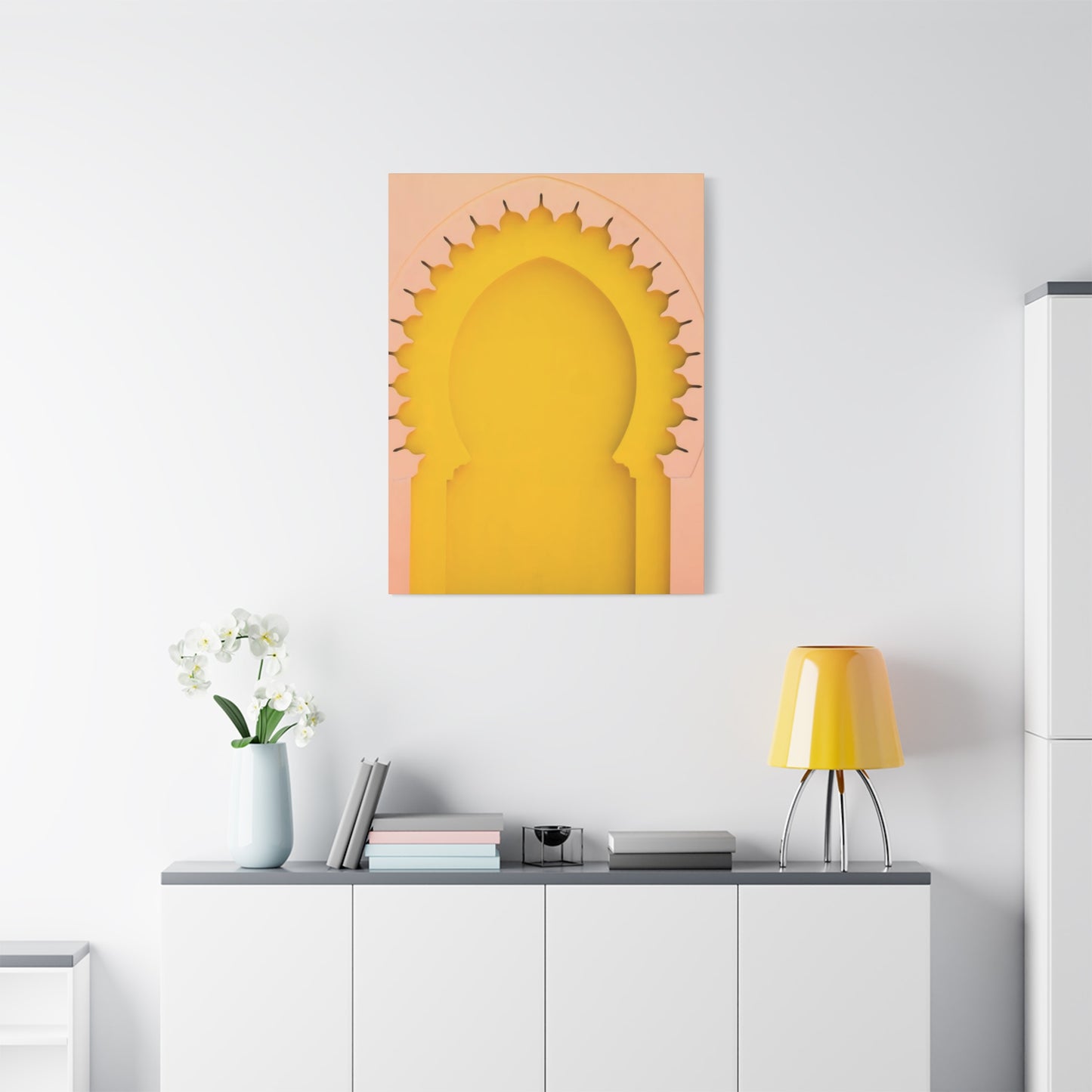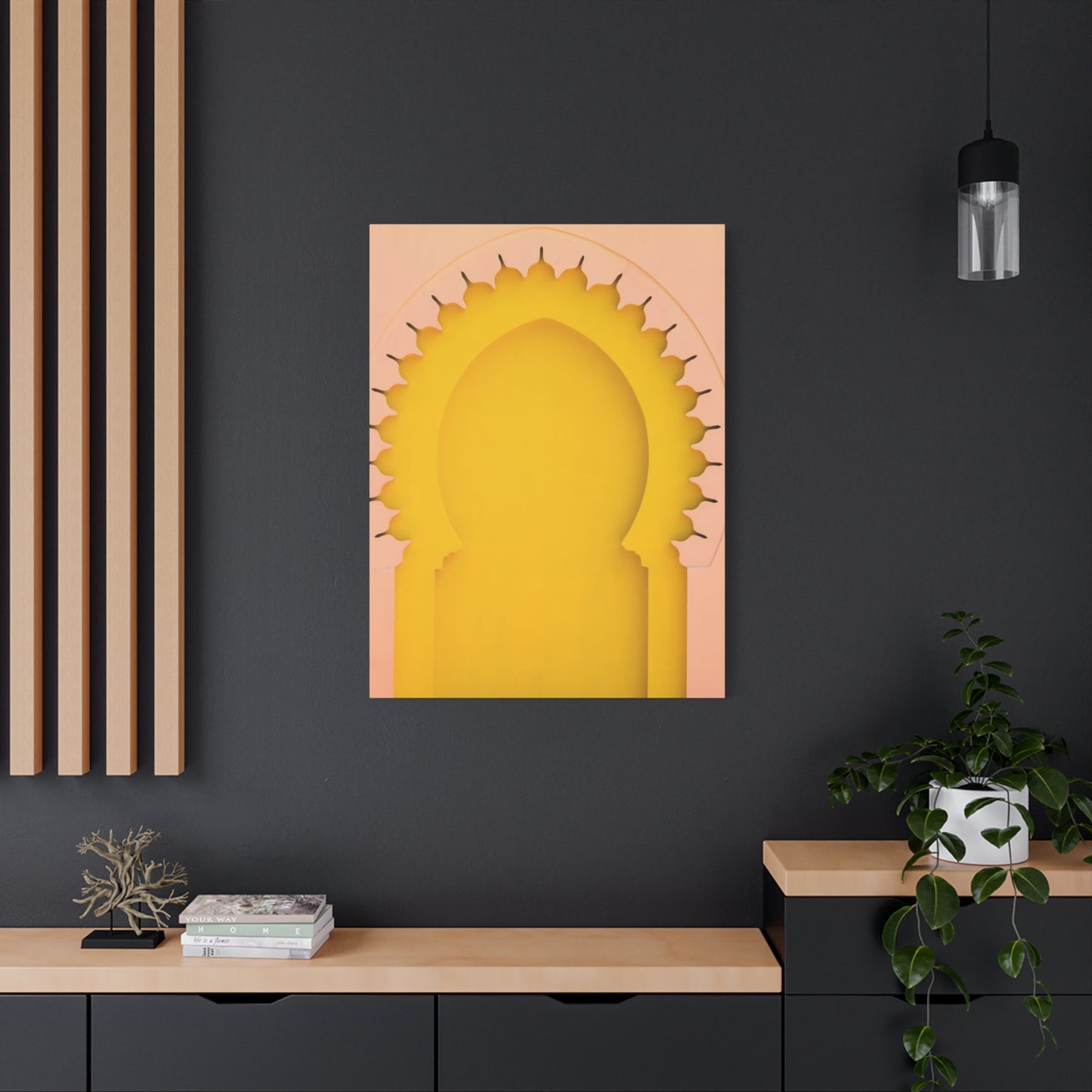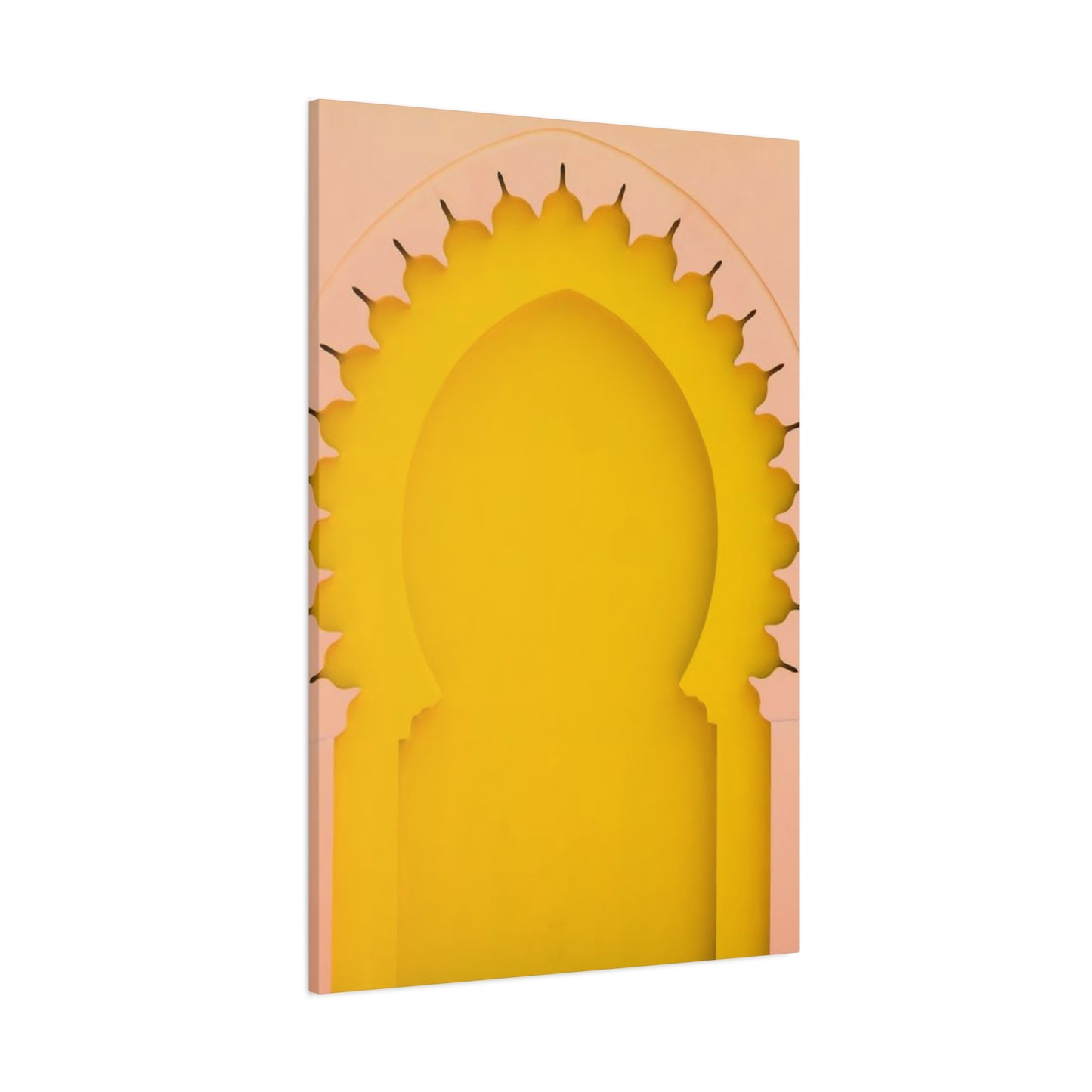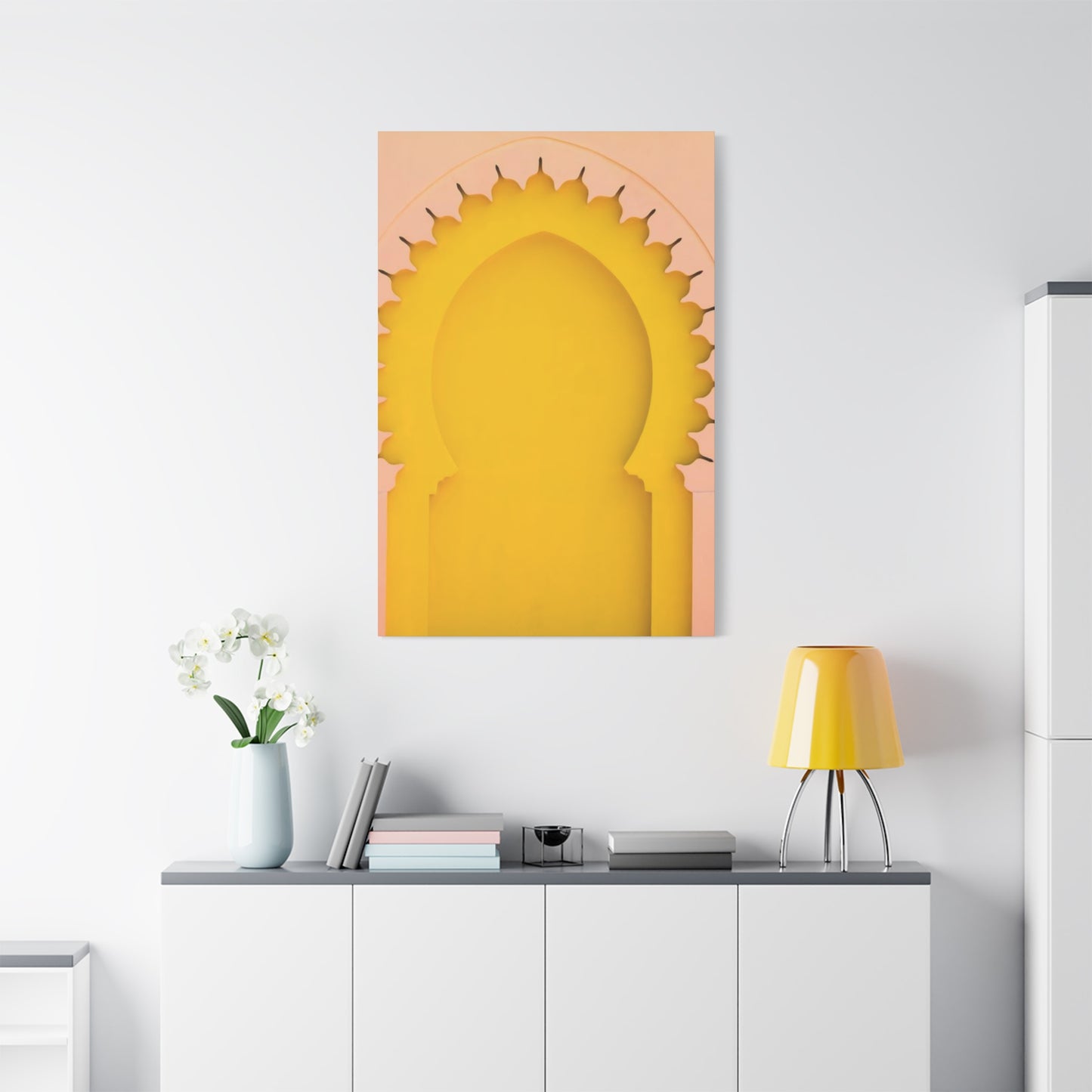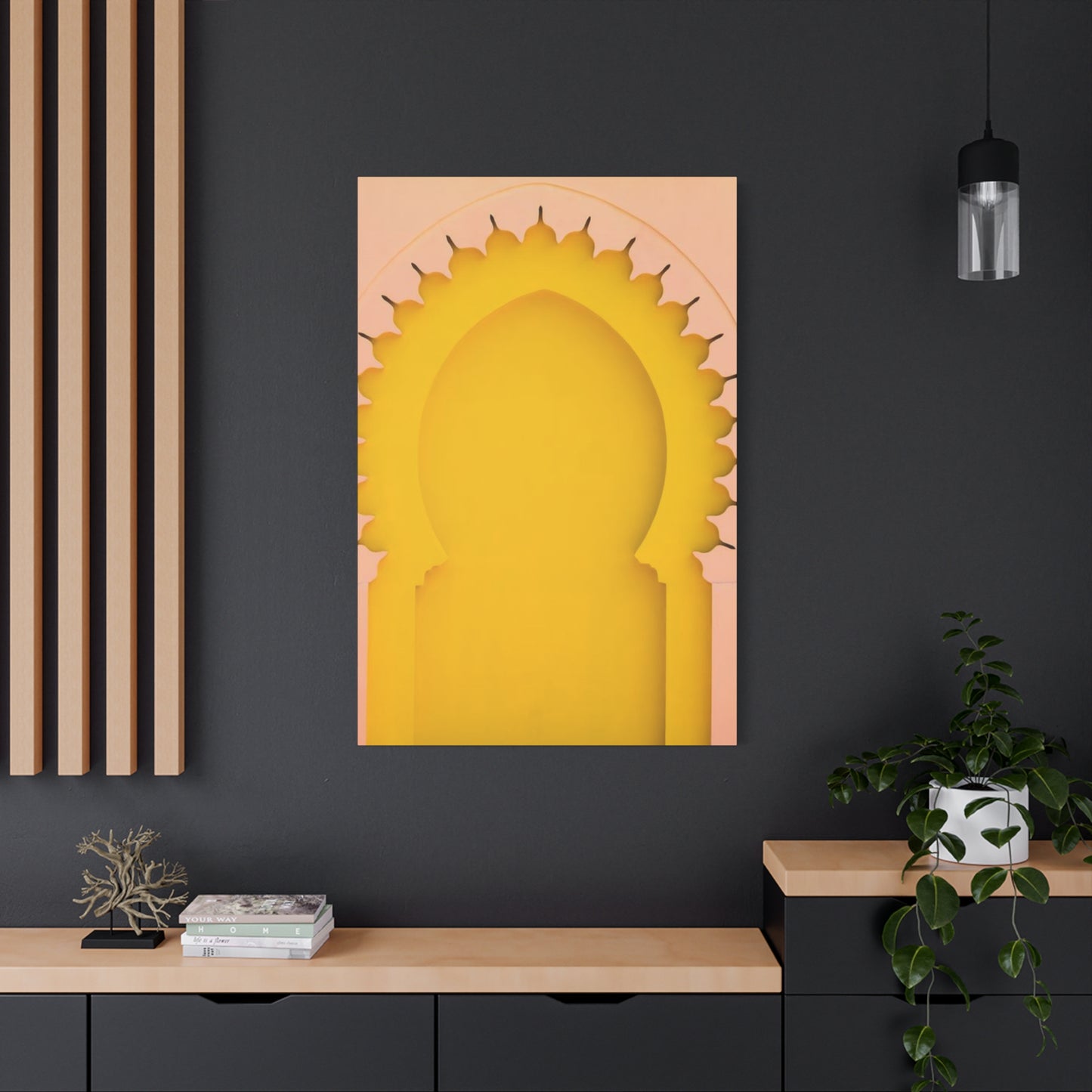Moroccan Wall Art Prints: Complete Guide to Window Design Cityscape Décor
Moroccan wall art canvas prints featuring window designs of the city offer a captivating blend of traditional architecture and contemporary visual appeal. These artistic pieces bring the exotic charm of North African aesthetics into modern homes, creating focal points that celebrate cultural heritage while enhancing any room's atmosphere. The intricate geometric patterns, vibrant color palettes, and architectural elements characteristic of Moroccan design have captivated decorators and homeowners worldwide, making these canvas prints increasingly popular for those seeking to infuse their living areas with worldly sophistication and visual depth.
The window motifs commonly featured in Moroccan-inspired artwork represent more than mere architectural elements. They symbolize the connection between private and public realms, the interplay of light and shadow, and the rich cultural traditions that have evolved over centuries in North African cities. When translated onto canvas prints, these window designs capture the essence of bustling medinas, ancient kasbahs, and sun-drenched courtyards, bringing a piece of distant landscapes into your home environment.
Canvas prints featuring Moroccan window designs serve multiple purposes beyond simple decoration. They act as conversation starters, artistic statements, and mood enhancers that can completely transform how a room feels and functions. The beauty of these prints lies in their versatility—they work equally well in minimalist contemporary settings as they do in more eclectic, bohemian-inspired environments. The key is understanding how to select, display, and integrate these pieces effectively within your existing décor framework.
Historical Significance of Moroccan Window Architecture
The architectural traditions of Morocco have developed over thousands of years, influenced by Berber, Arab, European, and African cultures. Windows in Moroccan buildings are not merely functional openings but carefully designed elements that serve practical and aesthetic purposes. Traditional Moroccan architecture emphasizes privacy while allowing air circulation and filtered light to enter living areas. This balance between openness and enclosure has resulted in distinctive window designs that have become iconic symbols of North African architectural heritage.
Moroccan windows often feature intricate lattice work known as mashrabiya, which allows residents to see outside without being observed from the street. This traditional screening technique creates beautiful patterns of light and shadow throughout the day as the sun moves across the sky. The geometric complexity of these screens reflects Islamic artistic traditions, which favor abstract patterns over representational imagery. These patterns are not random but follow mathematical principles that create harmonious proportions and visual rhythm.
The colors surrounding Moroccan windows tell stories of regional traditions and available materials. The famous blue hues of cities like Chefchaouen, the earthy terracottas of Marrakech, and the whitewashed walls of coastal towns each create different contexts for window designs. These color combinations have been refined over generations to work harmoniously with the intense North African sunlight, creating comfortable visual environments that remain cool despite the heat outside.
Arched openings are another hallmark of Moroccan window design, reflecting Islamic architectural principles that favor curved forms. These arches, whether horseshoe-shaped, pointed, or rounded, add elegance and visual interest to building facades. When captured in canvas prints, these architectural details bring dimensionality and cultural depth to flat wall surfaces, creating the illusion of looking through an actual window into a Moroccan cityscape.
The wooden elements often found in traditional Moroccan windows add warmth and texture to the overall composition. Carved wooden shutters, frames, and decorative elements showcase the exceptional craftsmanship of Moroccan artisans. These wooden components are frequently painted in vibrant colors or left in natural tones, creating contrast against painted walls. Canvas prints that accurately capture these textural details provide visual richness that engages viewers and rewards closer inspection.
Understanding Color Psychology in Moroccan-Inspired Artwork
Color plays a fundamental role in how Moroccan window design canvas prints affect room atmospheres and viewer emotions. The traditional color palette of Moroccan architecture includes rich blues, warm terracottas, vibrant oranges, deep reds, and earthy neutrals, each carrying specific psychological associations and cultural meanings. When selecting canvas prints featuring these colors, consider how different hues will influence the mood and energy of your living areas.
Blue tones, particularly the famous Chefchaouen blues, evoke calmness, serenity, and contemplation. These cooler hues work exceptionally well in bedrooms, bathrooms, and areas designated for relaxation. The various shades of blue found in Moroccan architecture range from pale sky blue to deep indigo, providing options for different intensity levels depending on your desired effect. Blue canvas prints can make rooms feel more spacious and airy while creating a connection to both sky and water elements.
Warm terracotta and clay tones connect viewers to earth elements and create feelings of groundedness and stability. These colors dominate the architecture of cities like Marrakech, where buildings blend seamlessly with the surrounding desert landscape. Canvas prints featuring these warm neutrals work well in living rooms, dining areas, and gathering places where you want to foster a sense of welcome and comfort. These earthy tones also serve as excellent neutral backgrounds that allow other decorative elements to shine.
Vibrant oranges, reds, and yellows capture the energy and vitality of Moroccan marketplaces and public gathering areas. These intense hues stimulate conversation, creativity, and social interaction, making them ideal for communal areas, home offices, and creative studios. However, these powerful colors require careful balance—too much intensity can overwhelm, so consider how the canvas print's color saturation and size will impact the overall room balance.
Green tones, often seen in Moroccan tile work and garden settings, bring associations of growth, renewal, and natural harmony. These colors work particularly well in home offices, study areas, and places where mental clarity and focus are priorities. Green hues bridge the warmth of yellow and the coolness of blue, making them versatile choices that complement various existing color schemes.
The contrast between light and dark elements in Moroccan window designs creates visual drama and depth. Canvas prints that capture strong shadows, bright highlights, and the play of light across textured surfaces add dimensionality to flat walls. This tonal variety keeps the artwork visually interesting from different viewing distances and under various lighting conditions throughout the day.
Selecting Canvas Print Sizes for Maximum Visual Impact
Choosing appropriate canvas print sizes is critical for achieving desired visual effects in different room settings. The relationship between artwork dimensions and wall proportions significantly influences whether a piece feels balanced, dominant, or lost within its environment. Moroccan window design prints are available in various sizes, from small accent pieces to large-scale statement artworks that command attention and define room character.
For large living room walls or above substantial furniture pieces like sofas, consider oversized canvas prints measuring 40 by 60 inches or larger. These statement pieces become room focal points that immediately draw the eye and establish the decorative tone for the entire area. Large-scale prints featuring Moroccan window designs work particularly well in contemporary lofts, open-concept living areas, and rooms with high ceilings where smaller artwork would appear insignificant and disconnected from the architectural scale.
Medium-sized prints ranging from 24 by 36 inches to 36 by 48 inches offer versatility for various applications. These dimensions work well above beds, in dining rooms, along hallways, and in home offices. Medium prints provide substantial visual presence without overwhelming other design elements, allowing you to create balanced compositions that integrate artwork with furniture, architectural features, and other decorative objects. This size range also facilitates creating gallery wall arrangements with multiple pieces working together.
Smaller canvas prints, typically 16 by 20 inches to 20 by 30 inches, serve as excellent accent pieces that add visual interest without demanding attention. These sizes work well for bathroom décor, small bedrooms, entryways, and as part of larger gallery wall compositions. Small prints featuring Moroccan window designs can be grouped in sets to create cohesive arrangements that tell visual stories or showcase variations on similar themes.
Square format canvas prints create different visual dynamics than rectangular compositions. Square prints measuring 30 by 30 inches or 36 by 36 inches offer balanced, centered compositions that work well in modern, minimalist settings. The symmetrical format complements the geometric nature of Moroccan design elements while creating stable, grounded visual statements. Square prints can be hung individually or arranged in grid patterns for contemporary gallery wall effects.
Panoramic horizontal prints extending 60 inches or wider capture expansive cityscapes showing multiple window elements across building facades. These ultra-wide formats work exceptionally well above long furniture pieces, in hallways, and above beds where horizontal emphasis complements room proportions. Panoramic Moroccan window designs can transport viewers into scenes, creating immersive visual experiences that suggest looking out across rooftops or along bustling city streets.
When determining appropriate canvas print sizes, consider viewing distance as a critical factor. Artwork that will be viewed primarily from across a room can be larger and bolder than pieces viewed from close range. In dining rooms where people sit facing walls for extended periods, medium to large prints at eye level when seated provide comfortable viewing experiences. Hallway art viewed while moving past should be sized to remain visually comprehensible even with brief exposure.
Gallery Wall Arrangements Featuring Moroccan Window Designs
Gallery walls offer creative opportunities to display multiple Moroccan window design canvas prints in cohesive arrangements that amplify visual impact. These curated collections allow you to explore various aspects of Moroccan architecture, create visual narratives, and fill larger wall areas with coordinated artwork that maintains individual piece integrity while contributing to an overall composition.
Symmetrical gallery wall arrangements create formal, balanced presentations that work well in traditional and transitional décor schemes. For symmetrical layouts, select an odd number of canvas prints, with the largest or most visually compelling piece centered and flanked by smaller or less dominant images. A classic symmetrical arrangement might feature a large central print measuring 36 by 48 inches with four smaller 20 by 24 inch prints positioned in pairs on each side. This balanced approach creates visual stability and order that complements structured room layouts.
Asymmetrical gallery walls offer more dynamic, contemporary presentations that generate visual movement and energy. These arrangements typically feature varied canvas sizes, orientations, and placements that create intentional imbalance and visual tension. When creating asymmetrical arrangements with Moroccan window prints, establish an imaginary central axis or focal point around which other pieces orbit. This approach maintains cohesion while allowing creative freedom in positioning individual elements.
Grid-based gallery walls present multiple canvas prints in uniform spacing and alignment, creating clean, organized presentations particularly suited to modern and minimalist aesthetics. For grid arrangements, select canvas prints in identical sizes and consistent framing or presentation styles. A grid of six or nine equally sized Moroccan window design prints creates powerful visual statements through repetition and variation, showcasing different window styles, color palettes, or architectural details within a unified organizational framework.
Salon-style gallery walls embrace organized chaos, featuring varied frame sizes, orientations, and spacings that cover substantial wall areas from floor to ceiling. This traditional European approach to art display works beautifully with Moroccan themes, as both embrace maximalist aesthetics and pattern layering. When creating salon-style arrangements, start with the largest piece and work outward, maintaining relatively consistent spacing between all elements while allowing the overall composition to develop organically.
Linear gallery walls arrange canvas prints in single horizontal or vertical rows, creating streamlined presentations ideal for hallways, stairways, and narrow wall sections. For hallway displays featuring Moroccan window designs, consider arranging three to five prints in a horizontal line at consistent eye level. This approach guides movement through transitional areas while maintaining visual interest. Linear arrangements work particularly well when prints share common elements like color palette, architectural style, or geographic location.
Corner arrangements utilize two adjacent walls to create wraparound gallery displays that activate otherwise underutilized areas. When planning corner gallery walls with Moroccan window canvas prints, treat the corner as the central anchor point with artwork radiating outward onto both wall surfaces. This approach works exceptionally well in living rooms, bedrooms, and home offices where corner arrangements can define functional zones within larger open areas.
Before committing to permanent installation, arrange canvas prints on the floor in your intended layout or create paper templates to hang temporarily on the wall. This planning step allows you to experiment with different arrangements, spacings, and compositions until you achieve the desired visual effect. Take photographs of various arrangements to compare options and make informed decisions about final placement.
Complementary Décor Elements for Moroccan-Themed Rooms
Moroccan window design canvas prints serve as excellent foundations for broader decorative schemes that incorporate complementary elements reflecting North African aesthetic traditions. Creating cohesive room designs involves carefully selecting furniture, textiles, lighting, and accessories that enhance and extend the visual themes introduced by the artwork while maintaining balance and preventing overwhelming sensory experiences.
Textile selections play crucial roles in reinforcing Moroccan decorative themes. Incorporate area rugs featuring geometric patterns, kilim designs, or traditional Beni Ourain styles with their characteristic diamond patterns and neutral backgrounds. These floor coverings add textural warmth while echoing the pattern vocabulary found in Moroccan architecture. Layer smaller rugs over larger neutral foundations to create depth and visual interest that complements wall-mounted canvas prints.
Cushions and throw pillows in rich colors and varied textures bring comfort and visual warmth to seating areas. Select pillows featuring embroidered details, tassel trim, sequin embellishments, or traditional Moroccan motifs that relate to the colors and patterns in your canvas prints. Mix solid colors with patterned options, ensuring color coordination while avoiding exact matches that can appear overly coordinated. Velvet, silk, and woven textiles add tactile variety that enhances the sensory richness characteristic of Moroccan-inspired environments.
Metalwork elements connect directly to Moroccan craft traditions. Incorporate brass or copper accents through decorative trays, lanterns, mirror frames, and hardware. These metallic elements catch and reflect light, adding shimmer and visual movement that animates rooms throughout the day. Pierced metal lanterns, either functional or purely decorative, create beautiful shadow patterns reminiscent of traditional mashrabiya screens featured in many Moroccan window designs.
Wooden furniture pieces with carved details, turned legs, or inlay work reference Moroccan woodworking traditions. Low-profile seating, carved wooden screens, and ornately detailed tables contribute authentic elements that ground the overall aesthetic. Painted wooden furniture in traditional colors like deep blue, rich red, or vibrant green creates bold focal points that coordinate with canvas print color palettes. Alternatively, natural wood tones in darker stains provide warmth and contrast against lighter walls and colorful textiles.
Plants and greenery bring life and organic elements that soften hard architectural lines while connecting to the courtyard gardens central to Moroccan home design. Select plants with architectural forms like fiddle leaf figs, palms, or bird of paradise that create dramatic silhouettes. Arrange plants in decorative ceramic or terracotta containers featuring geometric patterns or solid colors that coordinate with your Moroccan window canvas prints. Hanging plants add vertical interest and movement that complements static wall art.
Lighting choices significantly impact how Moroccan-themed rooms feel and function. Incorporate multiple light sources at different heights to create layered lighting schemes. Moroccan-style pendant lights with pierced metal or colored glass add ambient lighting while serving as sculptural focal points. Table lamps with ceramic or brass bases and patterned shades provide task lighting while reinforcing decorative themes. Consider installing dimmer switches to adjust lighting intensity for different activities and times of day.
Ceramic and pottery pieces displayed on shelves, tables, and windowsills add color, pattern, and handcrafted charm. Traditional Moroccan ceramics from cities like Fez and Safi feature distinctive patterns and glazing techniques that complement window design canvas prints. Arrange ceramic pieces in odd-numbered groupings of varying heights to create visually interesting vignettes that draw the eye and invite closer examination.
Mirrors with ornate frames expand visual dimensions while reflecting light and creating illusions of additional windows and openings. Position mirrors opposite windows to maximize natural light distribution or across from canvas prints to create intriguing visual echoes. Large floor mirrors leaning against walls add casual elegance, while smaller decorative mirrors arranged in groupings create gallery wall effects that complement canvas print displays.
Lighting Techniques to Enhance Canvas Print Visibility
Proper lighting significantly influences how Moroccan window design canvas prints appear and how effectively they contribute to room aesthetics. Strategic lighting choices enhance colors, reveal textural details, and ensure artwork remains visually accessible during evening hours when natural light fades. Developing comprehensive lighting plans that address ambient, task, and accent lighting needs creates environments where canvas prints consistently shine as intended focal points.
Natural lighting provides the most authentic and energy-efficient illumination for canvas prints. Position artwork on walls that receive indirect natural light rather than direct sun exposure, which can cause colors to fade over time. North-facing walls in the Northern Hemisphere receive consistent, indirect light throughout the day, making them ideal locations for displaying valuable canvas prints. If placing artwork on walls that receive direct sunlight, consider window treatments like sheer curtains or adjustable blinds that filter and diffuse harsh rays while maintaining brightness.
Picture lights mounted directly above or below canvas prints provide focused illumination that highlights artwork even in dimly lit rooms. LED picture lights offer energy efficiency, minimal heat production, and longevity compared to traditional incandescent options. Choose picture lights with adjustable arms that allow you to direct illumination precisely where needed, ensuring even coverage across the entire canvas surface. Warm white LED bulbs typically provide the most flattering illumination for canvas prints featuring warm earth tones common in Moroccan palettes.
Track lighting systems offer flexibility for illuminating multiple canvas prints or gallery wall arrangements from a single electrical source. Adjustable track heads can be positioned and angled to spotlight individual pieces while minimizing glare and reflections. This versatility makes track lighting ideal for rooms where artwork may be rearranged periodically or where multiple focal points require highlighting. Install track systems with dimmer controls to adjust lighting intensity for different occasions and activities.
Recessed ceiling lights equipped with directional trim allow you to wash walls with general illumination while minimizing fixture visibility. This architectural lighting approach works particularly well in contemporary settings where visible light fixtures might conflict with minimalist aesthetics. Position recessed lights 24 to 30 inches from walls and space them evenly to create uniform illumination without creating bright spots or dark zones. Use higher color temperature bulbs in the 2700K to 3000K range to maintain warm, inviting ambiance.
Wall sconces flanking canvas prints create balanced, symmetrical lighting schemes particularly suited to traditional and transitional décor styles. Position sconces at heights that direct light toward artwork without creating harsh shadows or glare. Adjustable sconces with swing arms provide flexibility to direct light precisely where needed. Select sconce designs that complement rather than compete with canvas print aesthetics—simple, streamlined fixtures typically work best, allowing artwork to remain the visual focus.
Ambient room lighting establishes overall brightness levels and influences how canvas prints integrate within broader visual contexts. Overhead pendant lights, chandeliers, and ceiling fixtures provide general illumination that makes rooms functional while setting mood and atmosphere. Layer ambient lighting with accent lighting directed at canvas prints to create depth and visual hierarchy. Dimmer switches on ambient fixtures allow you to adjust overall brightness, shifting emphasis between general room illumination and highlighted artwork.
Avoid positioning light sources where they create glare or reflections on canvas surfaces. Glossy canvas finishes are more prone to reflection issues than matte finishes. If reflection problems occur, adjust light angles, add diffusers to fixtures, or consider relocating either lighting or artwork. In rooms with multiple windows, observe how natural light interacts with canvas prints throughout the day, noting problematic glare conditions that might require window treatment adjustments.
Color temperature of light sources affects how canvas print colors appear. Warm light sources between 2700K and 3000K enhance warm colors like reds, oranges, and terracottas common in Moroccan designs. Cooler light sources above 3500K emphasize blues and greens while potentially making warm colors appear duller. For rooms with Moroccan window design prints featuring varied color palettes, warm white lighting typically provides the most flattering and authentic presentation.
Preserving Canvas Print Quality Over Time
Protecting your investment in Moroccan window design canvas prints requires understanding and implementing proper care and maintenance practices. Canvas prints can last for decades when properly cared for, maintaining their visual appeal and serving as enduring decorative elements. However, neglect or improper handling can lead to premature deterioration, color fading, and physical damage that diminishes artistic and monetary value.
Environmental conditions significantly impact canvas print longevity. Maintain consistent temperature and humidity levels in rooms where canvas prints hang. Extreme temperature fluctuations cause canvas materials to expand and contract, potentially leading to warping, cracking, or delamination of printed surfaces. Similarly, excessive humidity encourages mold and mildew growth, while extremely dry conditions make canvas brittle and prone to cracking. Aim for humidity levels between 40 and 55 percent and temperatures between 65 and 75 degrees Fahrenheit for optimal preservation.
Direct sunlight represents the greatest environmental threat to canvas print longevity. Ultraviolet radiation causes pigments to break down and fade, gradually diminishing color vibrancy and contrast. Never hang canvas prints in locations receiving direct sun exposure for extended periods. If room layout necessitates positioning artwork near windows, install UV-filtering window films or use curtains and blinds to block direct rays during peak sun hours. Consider rotating canvas prints to different locations periodically to ensure even exposure and prevent accelerated fading in sun-exposed positions.
Dust accumulation dulls canvas surfaces and, over time, can become embedded in textured areas, creating permanent discoloration. Dust canvas prints regularly using soft, dry microfiber cloths or specialized art dusters with gentle, sweeping motions. Avoid applying pressure that might damage printed surfaces or push dust particles into canvas texture. For hard-to-reach areas or heavily textured canvases, use soft brush attachments on low-power vacuum cleaners, maintaining several inches distance to prevent surface contact.
Avoid cleaning canvas prints with water, cleaning solutions, or chemical products unless specifically designed for canvas artwork. Most printed canvases feature protective coatings that can be damaged by inappropriate cleaning agents. If spills occur, blot immediately with clean, dry cloths using gentle dabbing motions rather than rubbing. For stubborn stains or significant soiling, consult professional art conservators rather than attempting aggressive cleaning that might cause irreversible damage.
Handle canvas prints carefully during relocation or cleaning to prevent physical damage. Always support canvas from behind when lifting or moving, distributing weight evenly across the frame structure. Never grab or carry canvas prints by stretcher bars alone, as this can stress corner joints and potentially separate canvas from frames. When removing canvas prints for cleaning or relocation, protect surfaces by placing them face-up on clean, soft surfaces rather than leaning against walls where contact could transfer dirt or cause impressions.
Protect canvas prints from physical impact and abrasion that can tear, puncture, or scratch printed surfaces. Avoid hanging canvas prints in high-traffic areas where contact with furniture, door swings, or passing people might cause damage. In homes with children or pets, position artwork higher on walls to prevent accidental contact. Consider using corner protectors or wall bumpers behind frames to maintain slight separation from walls, improving air circulation and preventing moisture accumulation.
Periodically inspect canvas prints for signs of deterioration, damage, or pest infestation. Check for loose staples, separated corners, warping, color changes, or suspicious marks that might indicate problems requiring professional attention. Address issues promptly before minor problems develop into major damage requiring expensive restoration. Document the condition of valuable canvas prints with dated photographs that provide baseline references for insurance purposes and future condition assessments.
Creating Cohesive Color Schemes Around Moroccan Prints
Developing harmonious color schemes that incorporate Moroccan window design canvas prints requires understanding color theory principles and how different hues interact within visual fields. Successful color coordination creates rooms that feel intentionally designed rather than randomly assembled, with canvas prints serving as anchor elements that inform and inspire broader palette selections.
Analogous color schemes utilize colors adjacent on the color wheel, creating harmonious combinations with subtle variation. If your Moroccan canvas print features prominent blue tones, develop room palettes incorporating adjacent colors like blue-green and blue-violet. This approach creates cohesive, calming environments with gentle visual flow. Analogous schemes work particularly well in bedrooms, bathrooms, and relaxation areas where visual harmony supports intended functions.
Complementary color schemes pair opposites on the color wheel, creating dynamic contrast and visual energy. Canvas prints featuring warm orange Moroccan walls against blue skies exemplify complementary relationships. Build room palettes that echo this color opposition through textiles, accessories, and accent pieces. Complementary schemes generate visual excitement and work well in social areas like living rooms and dining rooms where stimulation and engagement are desired outcomes.
Triadic color schemes incorporate three colors evenly spaced around the color wheel, creating balanced yet vibrant combinations. If your Moroccan window print features blue, orange, and green elements, develop room palettes that emphasize these three hues in varying proportions. Typically, one color dominates, a second supports, and the third accents, preventing overwhelming visual chaos. Triadic schemes offer versatility and visual interest while maintaining coherent color relationships.
Monochromatic color schemes explore variations in value and saturation within a single color family. Canvas prints featuring blue Chefchaouen windows inspire monochromatic room palettes incorporating sky blue, navy, powder blue, and slate blue across walls, textiles, and accessories. Monochromatic approaches create sophisticated, cohesive environments with subtle complexity. Add contrast through texture and pattern rather than color variation to prevent monotony.
Neutral-based color schemes build around canvas prints by using neutral backgrounds that allow artwork colors to dominate visual attention. Paint walls in soft whites, warm grays, or subtle beiges that recede visually, making colorful Moroccan window prints appear more vibrant by contrast. Neutral schemes create versatile foundations that accommodate furniture and accessory changes without requiring complete room redesigns.
Extract specific colors directly from canvas prints to inform paint, textile, and accessory selections. Hold paint chips against artwork under various lighting conditions to identify perfect matches or complementary shades. Photograph canvas prints and use color-matching apps to identify specific color values that can guide shopping for complementary items. This direct extraction approach ensures intentional color coordination rather than approximate matching.
Consider color proportions when developing room palettes around Moroccan canvas prints. The 60-30-10 rule provides helpful guidance—60 percent dominant color, 30 percent secondary color, and 10 percent accent color. Let canvas prints influence which colors fill each proportion. If artwork features predominantly blue windows with terracotta walls and green plants, consider making blue the dominant room color, terracotta secondary, and green an accent.
Test color combinations before committing to permanent decisions. Purchase small paint samples and apply them to poster boards positioned near canvas prints. Live with these samples for several days, observing how they appear under different lighting conditions and at various times of day. Gather textile swatches and arrange them near artwork to visualize how fabrics will coordinate with canvas print colors. This trial period prevents expensive mistakes and builds confidence in final selections.
Matching Moroccan Prints with Various Décor Styles
Moroccan window design canvas prints demonstrate remarkable versatility, complementing diverse decorating styles from traditional to contemporary. Understanding how to adapt these artworks to different aesthetic approaches allows you to incorporate Moroccan elements regardless of existing décor commitments, creating personalized environments that reflect individual tastes while honoring Moroccan design heritage.
Bohemian or eclectic décor styles naturally embrace Moroccan window canvas prints, as both celebrate global influences, pattern mixing, and rich color palettes. In bohemian settings, layer Moroccan artwork with textiles from various cultures, vintage furniture pieces, plants, and collected objects that tell personal stories. The key is maintaining cohesive color relationships despite stylistic diversity, allowing Moroccan prints to anchor rooms while surrounding elements add complementary visual interest.
Contemporary and modern décor styles might seem incompatible with traditional Moroccan imagery, but thoughtful integration creates striking results. Select Moroccan window prints with simplified compositions, muted color palettes, or abstract qualities that align with modern aesthetics. Frame choices matter significantly—sleek, minimal frames or frameless gallery wraps work better than ornate traditional frames in contemporary contexts. Position Moroccan canvas prints as bold focal points against neutral backgrounds where their architectural geometry complements clean modern lines.
Traditional décor styles accommodate Moroccan window prints when artwork colors and subjects align with formal design principles. Choose prints featuring classical architectural proportions and refined color palettes rather than intensely vibrant or heavily distressed compositions. Pair Moroccan artwork with symmetrical furniture arrangements, tailored upholstery, and refined accessories. Traditional framing in wood or gilded finishes helps integrate Moroccan prints into formal settings by providing visual transition between exotic subjects and conventional contexts.
Scandinavian and minimalist décor styles emphasize simplicity, functionality, and restraint. Incorporate Moroccan window prints by selecting images with predominantly neutral palettes punctuated by single accent colors. Black and white Moroccan photography or prints featuring white walls with subtle blue shutters work particularly well in minimalist environments. Limit yourself to one or two carefully chosen pieces rather than multiple competing artworks, allowing each print maximum visual impact within spare surroundings.
Industrial décor styles featuring exposed brick, metal elements, and raw materials create interesting counterpoints to Moroccan window prints' colorful exoticism. The contrast between rough industrial surfaces and refined Moroccan architecture generates visual tension that energizes rooms. Select larger-scale prints that can hold their own against industrial elements' visual weight. Consider metal frames or mounting systems that reference industrial materials while providing appropriate presentation for canvas artwork.
Coastal décor styles share color affinities with Moroccan architecture, particularly the blues, whites, and sandy neutrals common to both aesthetic traditions. Moroccan window prints featuring coastal city subjects like Essaouira or Asilah integrate seamlessly into beach-inspired environments. Emphasize color connections between artwork and room palettes while incorporating natural materials like rattan, jute, and weathered wood that complement both coastal and Moroccan sensibilities.
Farmhouse and rustic décor styles can accommodate Moroccan window prints through careful attention to color temperature and material coordination. Select prints featuring warmer earth tones rather than cool blues, and pair artwork with distressed wood furniture, natural fiber textiles, and vintage accessories. The key is maintaining the relaxed, lived-in quality central to farmhouse aesthetics while introducing Moroccan elements as collected treasures rather than formal statements.
Maximalist décor embraces abundance, layering, and visual complexity, making it naturally receptive to Moroccan window prints. In maximalist settings, display multiple Moroccan canvas prints as part of dense gallery walls mixing various art styles, sizes, and subjects. Layer patterns freely across textiles, wallpapers, and accessories, using Moroccan artwork as one element within visually rich environments. The key is maintaining intentionality despite apparent chaos, ensuring color relationships and compositional balance prevent overwhelming disorder.
Seasonal Décor Adjustments Featuring Moroccan Artwork
While Moroccan window design canvas prints serve as permanent decorative anchors, surrounding seasonal adjustments keep rooms feeling fresh and responsive to changing conditions and celebrations throughout the year. Strategic seasonal updates require minimal effort and expense while dramatically altering room moods and maintaining visual interest for occupants and visitors alike.
Spring updates emphasize renewal, growth, and lightness after winter's heaviness. Swap heavy winter textiles for lighter fabrics in fresh colors that coordinate with Moroccan canvas prints. Incorporate flowering plants and botanical elements that echo any greenery depicted in artwork. Add pastel accents through throw pillows, vases, and decorative objects that lighten room palettes without competing with established Moroccan color schemes. Consider temporarily repositioning canvas prints to receive increased natural light as days lengthen.
Summer adjustments celebrate outdoor living, bright colors, and relaxed atmospheres. Emphasize cooling blues and greens present in Moroccan window prints while adding bright citrus accents through accessories. Replace heavy rugs with lighter jute or sisal floor coverings that coordinate with artwork while feeling appropriate for warmer weather. Incorporate gauzy curtains that filter bright summer light protecting canvas prints from excessive sun exposure while maintaining airy, open feelings.
Fall transitions introduce warmer, richer colors that complement terracotta and earth tones common in Moroccan architecture. Layer textiles in deeper jewel tones, burnt oranges, and golden yellows that coordinate with canvas print palettes while reflecting autumn's natural color shifts. Add textural elements through woven throws, velvet pillows, and natural materials like wood and leather. Incorporate seasonal botanicals like wheat stalks, fall foliage, and gourds in colors that bridge artwork and autumn aesthetics.
Winter décor emphasizes warmth, coziness, and celebration. Layer additional textiles around rooms containing Moroccan canvas prints, adding plush throws, heavy curtains, and abundant pillows that create comfortable retreats from cold weather. Emphasize rich, deep colors present in artwork through candles, evergreen arrangements, and metallic accents in brass or copper that catch firelight and lamplight. Consider adding string lights or lanterns that reference Moroccan lighting traditions while providing ambient winter illumination.
Holiday decorating presents opportunities to temporarily enhance Moroccan canvas prints with celebratory elements. During winter holidays, add metallic ornaments, greenery, or candlelight nearby that complements rather than obscures artwork. For cultural celebrations with color associations, incorporate appropriate hues through temporary accessories positioned to coordinate with canvas print palettes. Ensure holiday additions enhance rather than overwhelm permanent Moroccan artwork, maintaining visual hierarchy that respects year-round decorative investments.
Seasonal adjustments extend beyond visible décor to include environmental controls affecting canvas print preservation. Adjust humidifiers and dehumidifiers seasonally to maintain optimal conditions despite exterior weather changes. Monitor heating and cooling patterns to prevent canvas prints from experiencing temperature extremes near vents or drafty windows. During humid summers, improve air circulation around artwork to prevent moisture accumulation. In dry winters, avoid positioning canvas prints near heating sources that might cause excessive drying.
Professional Framing and Mounting Options
How Moroccan window design canvas prints are presented significantly influences their visual impact and perceived value. Professional framing and mounting choices range from traditional approaches emphasizing craftsmanship to contemporary methods highlighting artwork itself. Understanding available options enables informed decisions that enhance both artwork protection and aesthetic presentation.
Gallery-wrapped canvases stretch printed images around frame edges, creating frameless presentations with finished appearances from all viewing angles. This contemporary mounting approach works particularly well with bold, colorful Moroccan imagery that benefits from uninterrupted visual flow. Gallery wraps maintain focus on artwork rather than decorative frames, complementing modern and minimalist décor styles. Depth options typically range from three-quarter inch to two inches, with deeper wraps creating more dramatic dimensional effects.
Floating frames surround gallery-wrapped canvases with minimal borders, creating subtle separation between artwork and walls while adding refined finishing touches. These frames appear to suspend canvas prints within their perimeters, generating dimensional effects that add sophistication to presentations. Floating frames work across diverse décor styles, from contemporary to traditional, depending on finish selections. Wood floating frames in natural tones create warmth, while metal options in black, silver, or brass offer sleek contemporary appearances.
Traditional framing encloses canvas prints within decorative wood or metal frames behind protective glazing. This approach offers maximum artwork protection while providing opportunities for creative frame selections that enhance overall presentations. Traditional framing works particularly well for smaller canvas prints displayed among other framed artworks in gallery wall arrangements. Frame style selections should consider both artwork characteristics and room décor—ornate frames suit traditional settings while simple profiles better serve contemporary contexts.
Metal frames provide contemporary alternatives to wood framing, offering clean lines and modern aesthetics. Aluminum frames in black, white, silver, or colored finishes complement Moroccan canvas prints while maintaining minimal visual interference. Metal framing works particularly well for larger canvas prints where substantial wood frames might appear heavy or overwhelming. Thin metal profiles emphasize artwork while providing structure and protection.
Wood frames offer versatility through species selections, finish options, and profile variations. Light wood tones like maple or ash create casual, contemporary feelings, while darker woods like walnut convey traditional sophistication. Painted wood frames in colors drawn from canvas prints create cohesive presentations that enhance color coordination. Distressed wood finishes add rustic charm suitable for farmhouse or eclectic décor styles.
Conclusion
In conclusion, Moroccan wall art prints that highlight window motifs and cityscape scenes offer a rich and evocative means to infuse living spaces with history, culture, and visual drama. These artworks draw upon Morocco’s architectural heritage—its iconic arched windows, carved wooden frames, geometric tilework (such as zellij), ornate plaster (tazouaqt), and the layered facades of ancient casbahs—melding structure and artistry in ways that are timeless yet adaptable. As explored throughout this guide, the allure of Moroccan window‑design cityscapes lies not just in their decorative beauty, but in their capacity to act as windows themselves—portals that invite light, nostalgia, and storytelling into modern interiors.
When selecting Moroccan window or cityscape prints, key considerations include balancing scale, color, texture, and authenticity. A large print of a Moorish window or bustling old city skyline can become the focal point of a room, while smaller pieces—triptychs, grouped pieces, textured works—can accent walls, hallways, or alcoves. Choosing colors that both echo Moroccan palettes (blues, emeralds, terracotta, golds) and complement existing decor ensures coherence; integrating neutral or earthy tones helps prevent the design from overwhelming the space. Texture—whether through printed relief, carved wood frames, metalwork, or mixed media—adds depth and tactile interest, creating dynamic interplay of shadow and light.
Authenticity and craftsmanship matter. Pieces inspired by Moroccan styles are widely available, but the emotion and value of genuine craftsmanship—hand‑painted details, real carved wood or plaster, authentic tile‑style work—often outshine mass‑produced imitations. Knowing what motifs signify—arches symbolizing shelter or spiritual threshold, geometric patterns reflecting infinite order, ornate windows as symbols of light and perspective—enriches both the purchasing experience and the final effect in your space.
Practical issues such as lighting, placement, and scale must also be respected. Well‑positioned lighting (natural or accent lighting) can bring out fine details and deepen the ambiance; height and alignment relative to furniture ensure visual comfort; room size determines whether a single dramatic piece or multiple smaller works work best. Consider also maintenance: protecting prints from direct sunlight, keeping materials appropriate to climate (moisture, humidity), and choosing durable finishes will help preserve beauty over time.
Finally, Moroccan window design cityscape decor is not only a decorative niche—it’s a bridge between past and present. It allows homeowners and decorators to pay tribute to artistry of cities like Fez, Marrakech, Rabat, and others, while embedding their own style and narrative. When done thoughtfully, such wall art doesn’t simply adorn the walls—it transforms rooms, moods, even moments.
Embrace the interplay of light, form, colour, and story. Let Moroccan windows in art become more than images—they become portals to imagination, dialogue, and inspiration. With balance, respect for craft, and attention to detail, Moroccan cityscape wall art can turn ordinary walls into immersive canvases, turning ordinary rooms into spaces suffused with warmth, character, and timeless elegance.

















